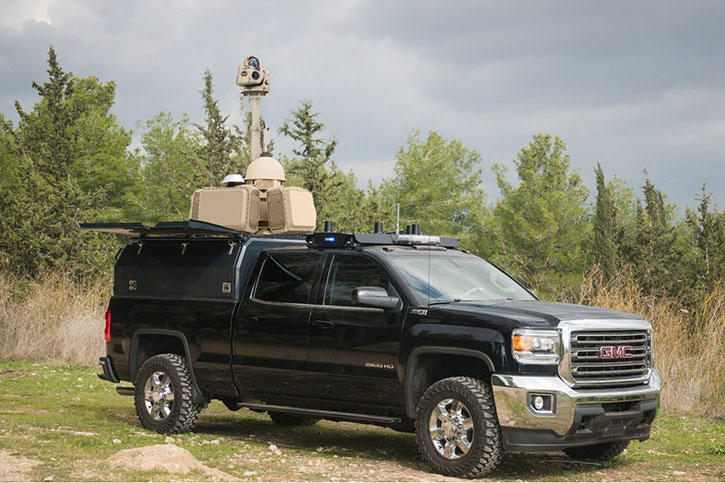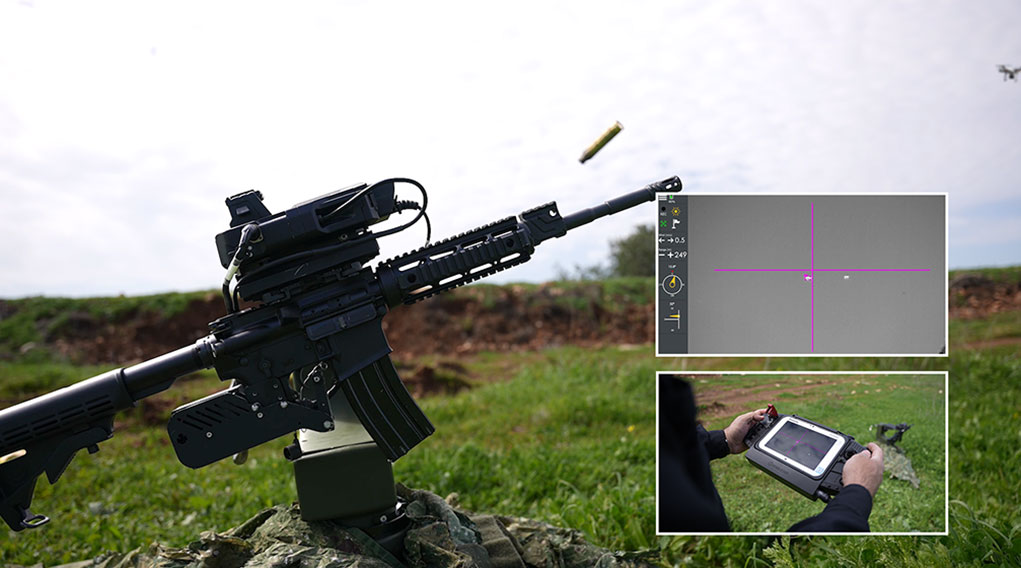The ongoing wars in Eastern Europe, Caucasus, and the Middle East have emphasized drones as a new and rapidly changing tool of warfare. First manifested in the US war in Iraq and Afghanistan, the Medium Altitude Long Endurance (MALE) drones, such as the MQ-9 Reaper, were famous for their ability to perform extended reconnaissance and rapidly close attack loops in hybrid and asymmetric warfare. Today, these large and expensive drones encounter difficulties surviving over contested areas encountered by Iranian-made radar-guided Sayyad-2 anti-aircraft surface-to-air missile (SAM) and Counter-UAS optimized optically guided missiles, such as the Iranian Saqr Type 358 UAS interceptor powered by a micro-turbine jet engine. Both have been used successfully against US and Israeli drones over Yemen and Lebanon.
Drone Usage in Recent Conflicts
In the Ukraine war, MALE drones cannot survive, but much smaller and cheaper tactical UAS, such as the Russian Z-16, manage to survive for longer missions, along with many types of one-way attack (OWA) drones widely used on both sides. When these drones operate on extended missions, they may not enjoy the freedom of action they had only months ago. The Ukrainians have recently begun to employ FPV drones to intercept fixed-wing surveillance drones using the FPV drone as a ‘hit to kill’ interceptor. Used against multirotor drones, other systems employ various means to disable the drone’s rotors, such as nets, traps, or nylon strips to entangle them.
In the Middle East, all participants use OWA drones widely. While most attacks launched from long ranges (Iraq, Syria, and Yemen) are repelled by Israel, the mountainous area of South Lebanon and the Galilee poses a challenge for the detection and interception of OWA drones launched by the Iranian proxy group Hezbollah. The Lebanese group has acquired much experience with the new weapons and directed many of the attacks against Israeli surveillance systems to blind Israeli sensors and capabilities to intercept those attacks. Initially, Israel was slow to react, but after several weeks, it managed to eliminate most of the suicide drones flown into Israel.
Challenges in Countering OWA Drones
Countering OWA drones is challenging, especially since they are ‘dark,’ meaning they operate automatically or autonomously without external guidance control. Moreover, as these targets get smaller and more maneuverable, they are even more difficult to detect, track, and engage.
Like air defenses, detection and early warning are the most challenging tasks. The most efficient sensors – radars are effective in flat and open terrain, but their coverage is limited and often degraded in mountainous or urban areas, necessitating augmentation by other means, such as electro-optical and thermal imagers. These sensors rely on deep learning and neural networks (artificial intelligence – AI) processing to identify drones based on a combination of signals, such as shape, rotation, and motion patterns, as target identifiers, ensuring that detected objects are drones.
Electro-Optical and Infrared Detection Systems
EO systems can support detecting and verifying UAS targets at extremely long ranges, particularly when engaging fixed-wing, high-flying drones detectable by radar but requiring tracking assistance from other systems. Controp recently introduced a comprehensive range of integrated EO/IR systems under the I-TACT product line for mobile, deployable, and fixed C-UAS and Air Defense applications. Optimized for spotting and tracking low-signature targets, the I-TACT line provides passive scanning, classification, and tracking of loitering drones at ranges from six to 40 km or small mini-drones at one to six kilometers. Controp offers I-TACT integration into existing optronic systems with the performance level required for Detection, Recognition, and Identification (DRI) at long range, or as part of new systems. Enhanced image processing capabilities improve the I-TACT system’s performance, allowing the system to focus on specific regions of interest in the picture to improve target recognition, automatic flight path prediction, and tracking, enabling users to improve UAS detection and engagement.
Third Eye Systems offers the integration of its TESSERACT aEYE deep learning neural network algorithm as an add-on for EO/IR imagers produced by other manufacturers. The algorithm upgrades any payload by adding AI-based analytic processing to enable drone detection, recognition, and tracking in the sky. One of the applications is the vEYE system, which is employed on manned and unmanned ground vehicles to improve situational awareness. The IDF has been using the systems in the recent war, enabling the developers to gain extensive experience in drone-operated and counter-UAS activities.

Counter-UAS Systems
Counter-UAS (C-UAS) missions can be achieved by electronic warfare (‘soft kill’) or by kinetic means (‘hard kill’). Systems relying on soft kill often employ several layers of engagement, attempting to jam or spoof the drone’s navigation systems or active jamming targeting the drone’s control channels. Both require rapid electronic scanning to identify the drone’s operating frequencies and electronic signature to proceed with an effective attack. Such systems should also be agile to track any changes the enemy has made to evade countermeasures. Several Israeli developers have fielded advanced land-based and mobile C-UAS systems to counter drone attacks. These include IAI with its Drone Guard, Elbit Systems with the ReDrone, and RAFAEL fielding the Drone Dome.
Traditional active counter-drone detection methods, such as radars, can be detected by electronic surveillance, exposing the sensor’s position to the enemy. Employing signals intelligence means passively providing the same service without revealing the sensor’s position. Unlike systems that rely on radar and EO/IR for detection, tracking, and identification, the new generation of C-UAS systems relies on passive Radio Frequency (RF) sensing and protocol recognition to detect, track, and engage rogue drones. Independent of an active radar or line of sight for EO/IR sensors, these new systems can better handle complex urban areas and operate in an RF-saturated environment with minimal interference.

Soft-Kill EW Solutions
Israel’s C-UAS specialist D-Fend offers the EnforceAir 2 C system configured in a backpack, vehicular, or mast mount to protect a fixed site. The core of the system is the Cyber SDR hardware packing multiple receivers for real-time scanning and processing, with advanced RF Cyber technology feeding multiple transmitters and advanced antennae that optimize radiation and throughput to deliver the highest volume and weight ratio performance.
Another company providing integrated RF-Cyber C-UAS solutions is Sentrics. Their system can detect multiple targets simultaneously, even under GPS spoofing or jamming, often used to distract drones. Sentrics also monitors each drone’s position and heading, locating their coordinates and their controller’s last known location. It also reports the drone’s vendor, type, and serial number for commercial drones. For the mitigation part, the system can employ jamming to disconnect the drone from the controller and bring it to a safe altitude and a safe landing in designated areas or employ ‘smart disconnect’ resulting in the drone entering “Hover until it dies” mode or “Return home”, according to the way the drone was programmed.

Tactical Solutions for Front-line Units
However, while protocol-based mitigation effectively engages rogue commercial drones, the ground forces at the front line cannot rely only on specialized air-defense assets, especially when engaged by suicide drones or improvised First-Person View (FPV) drones, which are commonly used in the Ukrainian war but have not yet appeared by the terrorist groups in the Middle East. A tactical unit or individual being attacked by such weapons should be able to defend themselves using every means. The SMASH weapon sight developed by Smartshooter provides such capability. Mounted on the rifle, machine gun, or remote weapon station, SMASH enables users to independently identify targets or leverage detection system guidance for precision locking. Harnessing Artificial Intelligence, computer vision, and advanced algorithms to track and track the target assigned by the user. SMASH tracks the target movements and synchronizes the shot release when the line of fire aligns with the correct ballistics to ensure an accurate hit.
Non-Lethal Countermeasures
Non-lethal countermeasures are employed against surveillance drones or those flying over civilian areas. Such means may include capturing quadcopters with arresting gear, as the Goshawk from Robotican performed. This six-rotor C-UAS vehicle can be deployed to augment the security system of a strategic site. Once a drone is detected, the Goshawk is scrambled to intercept it. Its autonomous flight and targeting capability include in-flight target detection, tracking, lock and seek. For the end game, Goshawk employs an arresting net to interrupt the rotor blades and catch the targeted drone, thus preventing the risk of the drone hitting the ground with explosives.
Further Reading:




















